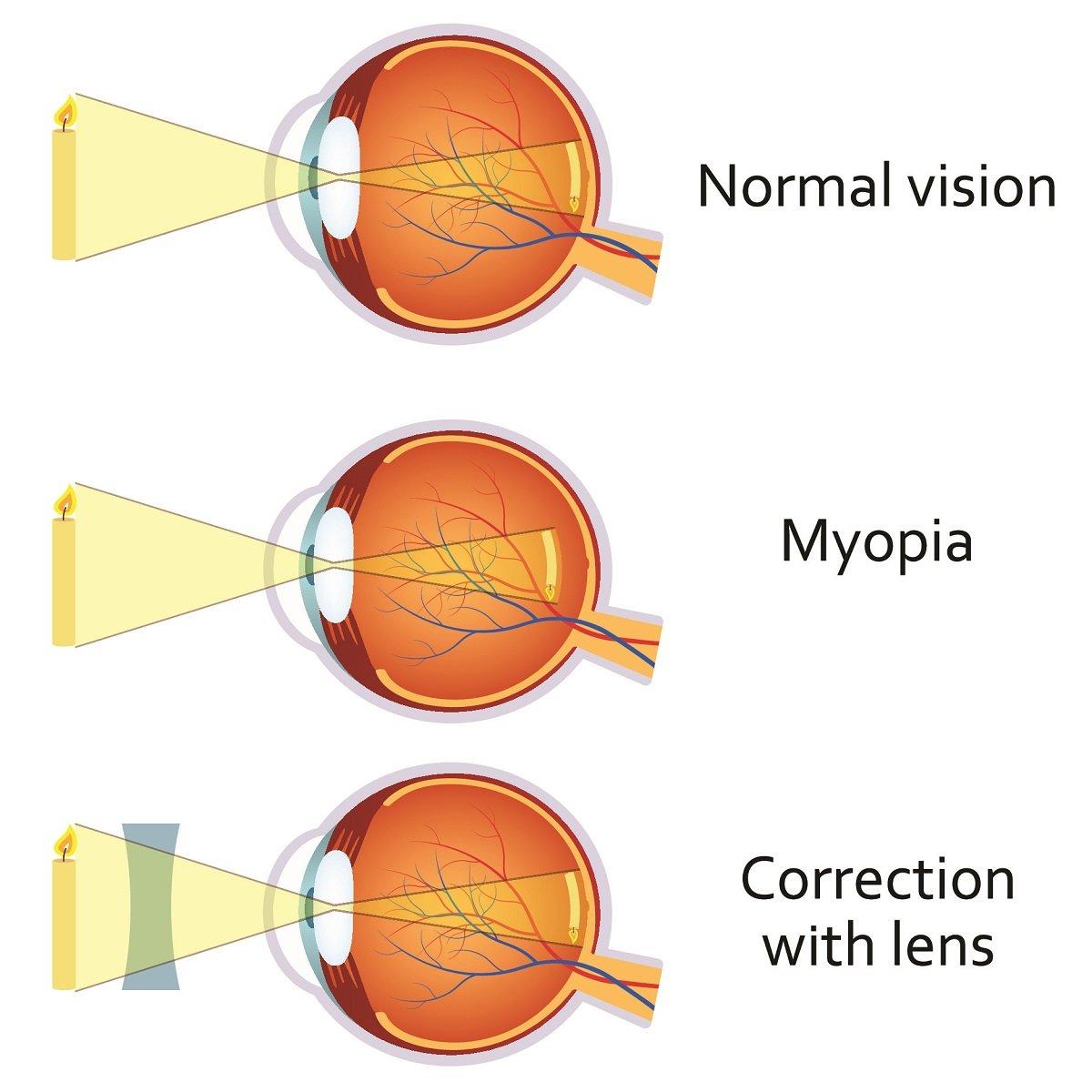Myopia (Nearsightedness) Treatment: Options and Strategies for Clear Vision
Subheading: Understanding Myopia and its Impact on Vision
Introduction:
Myopia, commonly known as nearsightedness, is a refractive error that affects millions of people worldwide. It is characterized by the ability to see nearby objects clearly while distant objects appear blurry or out of focus. In this comprehensive guide, we will explore the causes, symptoms, and delve into various treatment options and strategies available to manage myopia and maintain clear vision.
 Understanding Myopia
Understanding Myopia
Causes and Symptoms of Myopia
Myopia occurs when the eyeball is slightly longer than usual, or the cornea and lens have excessive curvature. These structural irregularities prevent light from focusing directly on the retina, leading to blurred vision for distant objects. While the exact cause of myopia remains unclear, genetics and environmental factors, such as excessive near work and limited outdoor activities, are believed to contribute to its development.
Symptoms of myopia include difficulty reading road signs, squinting to see distant objects, eyestrain, headaches, and eye fatigue. If you experience any of these symptoms, it is crucial to consult an eye care professional for a comprehensive eye examination.
Myopia Treatment Options
Eyeglasses and Contact Lenses
The most common and immediate method for correcting myopia is through prescription eyeglasses or contact lenses. These corrective lenses compensate for the refractive error, helping light focus properly on the retina and restoring clear vision. Eyeglasses provide a simple and convenient option, while contact lenses offer greater flexibility and a more natural field of view.
Refractive Surgery
For individuals seeking a more permanent solution, refractive surgery can be considered. Procedures such as LASIK (Laser-Assisted In-Situ Keratomileusis) and PRK (Photorefractive Keratectomy) reshape the cornea, allowing light to focus accurately on the retina. Refractive surgery can significantly reduce or eliminate the need for glasses or contact lenses. However, it is essential to consult with an eye care professional to determine eligibility and discuss potential risks and benefits.
Myopia Control Strategies
Orthokeratology (Ortho-K)
Orthokeratology, also known as Ortho-K, involves wearing specially designed gas-permeable contact lenses overnight. These lenses gently reshape the cornea, providing temporary correction and allowing for clear vision throughout the day. Ortho-K has shown promising results in slowing down myopia progression, making it a popular choice, particularly for children and teenagers.
.jpg) Atropine Eye Drops
Atropine Eye Drops
Another effective strategy for controlling myopia progression is the use of atropine eye drops. Atropine, a medication used to dilate the pupils, has been found to slow down the elongation of the eyeball, thereby reducing myopia progression. Low-dose atropine eye drops have been shown to be effective with minimal side effects, making them a viable option for managing myopia.
Lifestyle Modifications
Certain lifestyle modifications can also help manage myopia progression. Increasing outdoor time, reducing near work activities, maintaining proper lighting conditions, and taking regular breaks during prolonged near tasks are recommended strategies. Additionally, maintaining a balanced diet rich in eye-healthy nutrients, such as vitamins A, C, and E, can support overall eye health.
Conclusion:
Myopia (nearsightedness) is a common refractive error that affects many individuals. By understanding the causes, symptoms, and available treatment options, individuals can take proactive steps to manage their myopia effectively. Whether through corrective lenses, refractive surgery, or myopia control strategies like Ortho-K and atropine eye drops, it is essential to consult with an eye care professional to determine the most suitable approach for achieving clear and healthy vision.
Q&A
Q. What are the common treatment options for myopia nearsightedness?
A. Treatment options for myopia include wearing corrective lenses such as glasses or contact lenses, undergoing refractive surgery like LASIK, or using orthokeratology (corneal reshaping) lenses.
Q. Can myopia be cured permanently?
A. While myopia cannot be permanently cured, it can be effectively managed through various treatment options to improve vision and reduce dependence on corrective lenses.
Q. At what age should myopia treatment be started?
A. Myopia treatment can be initiated at any age, but it is often recommended to start early, especially during childhood or adolescence, to prevent further progression of nearsightedness.
Q. Are there any non-surgical treatments available for myopia?
A. Yes, non-surgical treatments like orthokeratology lenses, which are worn overnight to reshape the cornea temporarily, can help correct myopia without the need for surgery.
Q. How effective are the different treatment options for myopia?
A. The effectiveness of myopia treatment options varies from person to person, but in general, corrective lenses provide immediate vision improvement, while refractive surgeries and orthokeratology can offer long-term benefits in reducing myopia progression and the need for glasses or contacts.
We are associated with experienced and highly skilled medical professionals. We use the latest medical technology available in the world and we provide medical services in collaboration with JCI & NABH Certified hospitals only. Our services include various types of treatment and organ restructuring and transplant.
